Quint Campbell of Champaign, Illinois, had just stopped drinking diet sodas when he and his family picked out a date for a family portrait. Shortly after the photo was taken, the husband and father of two decided he wanted to lose weight by “going Paleo.” He is trying to balance his diet with his family’s — a mix of standard American and gluten-free. He wants them to also be Paleo, a “Stone Age” diet that aims to mimic hunter-gatherer nutrition of human ancestors.
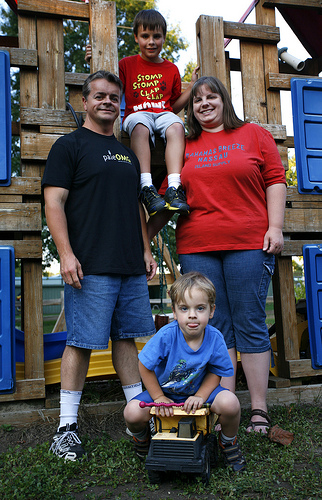 Campbell, 41, learned about the Paleolithic (or “Paleo” for short) diet from a family at his church, First Christian in Champaign. The diet calls for avoiding all grains, dairy, legumes, and refined sugars. It is based on the notion that humans are evolved to eat as hunter-gatherers; evolutionarily speaking, we have not had time to adapt to the industrialized diets many people now eat.
Campbell, 41, learned about the Paleolithic (or “Paleo” for short) diet from a family at his church, First Christian in Champaign. The diet calls for avoiding all grains, dairy, legumes, and refined sugars. It is based on the notion that humans are evolved to eat as hunter-gatherers; evolutionarily speaking, we have not had time to adapt to the industrialized diets many people now eat.
The Paleo diet argues that hunter-gatherers were generally free of the cardiovascular and chronic diseases that are becoming more rampant, especially in developed nations. According to the Centers for Disease Control and Prevention, more than half of Americans have at least one chronic illness like heart disease, which accounts for about 50 percent of deaths. Seventy-eight million adults and 12.5 million children are obese, and 25.8 million have diabetes. The American Society for Metabolic and Bariatric Surgery states that more than 200,000 weight-loss operations are performed every year. The National Foundation for Celiac Awareness reports that three million Americans have celiac disease and that 95 percent are undiagnosed.
People who follow a Paleo diet say it is unlike fad weightloss diets since it focuses on health overall. Weight loss tends to be an added bonus for many people who adhere to it. There are no concrete numbers on how many people practice a Paleo diet, and most of the communication is through health clubs, blogs, and online forums. Gluten-free diets, however, are becoming increasingly common — not only because of the rising number in people with celiac disorder, but also because of a rising number in people with a gluten sensitivity.
Dr. Alessio Fasano, professor and director of the Center for Celiac Research at the University of Maryland, is at the forefront of research on the distinction between gluten sensitivity and celiac disease. He said that he, his colleagues, and other experts are still operating on exclusion criteria. Consequently, the estimates on people with a sensitivity still vary from 2 to 93 percent.
As far as they can tell, celiac disease is a severe autoimmune reaction to gluten, or wheat protein. Symptoms include intestinal discomfort and bloating, rashes, and changes in weight and depression. It is different from a gluten sensitivity or even a wheat allergy. They are looking to create clear, commercially available tests that would distinguish the three conditions.
“We don’t have biomarkers,” said Dr. Fasano. “You can’t start a gluten-free diet without having a clear understanding in which parts of the spectrum of gluten-free disorders. We are right now searching for these tests.”
Yet that’s precisely what Campbell and his ten-year-old son, Parker, are doing — going gluten-free or, in Campbell’s case, entirely grain-free.
After his friends tried it and told him about it, Campbell decided to research the diet and the CrossFit gym, where Paleo followers across the country tend to cluster. He officially started a Paleo diet in October 2010. By January of the following year, he was working out at CrossFit to supplement his new diet.
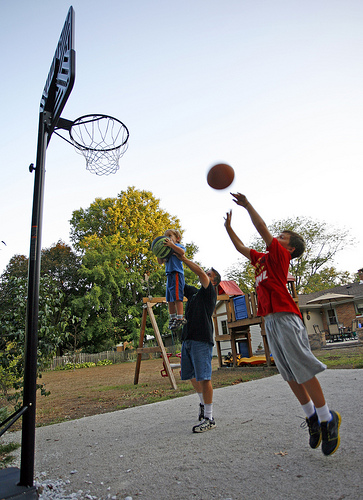 “I was interested in the challenge,” said Campbell. “I also wanted to lose weight, and this wasn’t anything like Weight Watchers where you have to count things. You just learn what’s allowed and you can basically eat as much as you want of it.”
“I was interested in the challenge,” said Campbell. “I also wanted to lose weight, and this wasn’t anything like Weight Watchers where you have to count things. You just learn what’s allowed and you can basically eat as much as you want of it.”
Campbell, who is 5′ 6″, has lost weight and gained muscle. Two years after eating Paleo and exercising at CrossFit, he has lost more than 50 pounds. He likes what he sees and is sticking to his routine of rigorous morning exercise and a Paleolithic diet.
Campbell wakes up at 4:30 a.m., makes a quick breakfast of eggs and leftover meat and is in the car on his way to exercise. At least three times a week, he goes to 5:00 a.m., one-hour workout sessions at CrossFit in Champaign. By 7:00 a.m., he is aat his desk at work, eating his second breakfast of scrambled eggs and a protein shake.
“I’m not ashamed to say I’m on no grains, no sugar,” said Campbell. “Everybody thought I was crazy,” he said, “but now they’re interested.”
Three of his coworkers are trying the Paleo diet and one of them has lost more than 10 pounds in a month. Another toyed with it, but quit.
Campbell grew up in Oakland, Illinois, a small town about an hour south of Champaign. His parents and brother worked in the family farm machinery business, and almost everyone in town worked in agriculture. But he did not want anything to do with it. He left town to attend Eastern Illinois University in Charleston, Illinois, where he majored in music.
After several temp jobs in publishing, he ended up as a marketing manager in agriculture for his father’s business in Oakland, Illinois. He now works in Rantoul and does marketing for Birkey’s, an agriculture and construction machinery supplier.
“Everything for them is grain-based and corn-fed,” said Campbell. “And here I am looking for grass-fed beef!”
His wife, Amy, is not Paleo and grew up in a family that ate a lot of convenience meals and fast food. She said they ate a lot of meat, potatoes, and hardly any veggies.
Amy Campbell describes the change as radical and said that Quint is very committed to it. Like his mother, the Campbell’s three-year-old son, Jackson is also not Paleo. Amy said that Quint’s change has, however, rubbed off on the rest of the family.
“It’s introduced me to foods I had never thought to try before,” said Amy. “In fact, I hardly ate any vegetables at all before all this.”
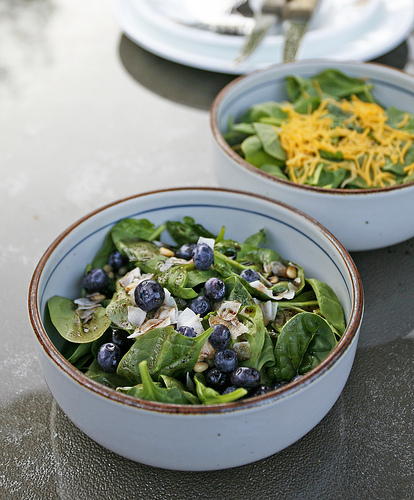 While their kitchen was once heavily stocked with cookies and other processed snacks, it now has much more fresh produce. One of their favorite meals is zucchini or squash pasta, sliced into ribbons with a fork or peeler.
While their kitchen was once heavily stocked with cookies and other processed snacks, it now has much more fresh produce. One of their favorite meals is zucchini or squash pasta, sliced into ribbons with a fork or peeler.
“We’re still a meat and potatoes family,” said Campbell, who loves to grill. “But we eat a lot more vegetables and fruits now.”
Campbell does most of the cooking in the house. His wife does the shopping and goes primarily to County Market. Every once in a while Campbell hunts, but said they get most of their specialty items, like local, grass-fed beef or nuts, in bulk online.
“We try to get local and organic whenever we can,” said Campbell. “If we want to be eating naturally, then so should the animals we consume.”
Campbell said that corn is important in his line of work, though more farmers are picking up on grass-fed. He said he believes grass-fed is better, though his father and colleagues would probably argue against that.
“If I’m eliminating grains in my own intake, I’d like to eliminate it in the animals’ as well,” said Campbell. “You can’t eliminate grains 100 percent in today’s society, but these are the types of steps you should be taking.”
Like most people at his gym, Campbell is only “100 percent Paleo” when on a special fast called a “Whole 30” — a month-long cleanse of absolutely no grains, sugar, or dairy. He has completed two of the cleanses, which are considered a tradition in the Paleo community.
Each time, he has lost up to 10 pounds. During the last fast, he quit chewing gum, which he said is bad for the digestive tract and an additional source of refined sugar.
“As far as gluten goes,” he said, “I used to feel instantly bloated. It was the feeling I had going to bed every night — feeling fat all the time.”
He said he used to have frequent headaches, but has not had to take any aspirin since going Paleo. He also reports sleeping much better.
“Nutritionally, it makes you stronger and able to do the workouts,” said Campbell. “I used to have knee problems and had to go through physical therapy, but I now have much stronger legs. I can’t remember the last time my knees swelled.”
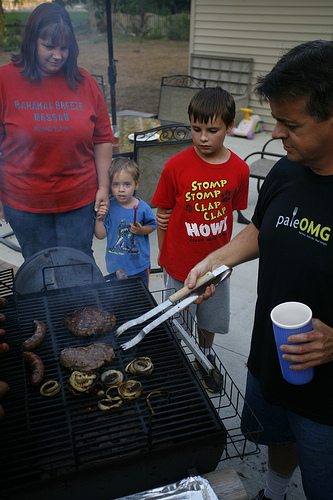 Before starting CrossFit, Campbell was concerned that he would not be able to keep up with the rigorous, military-like workouts. He has cleidocranial dysostosis, an extremely rare genetic disorder that affects the development of the skull and collarbones. He was born without a collarbone, extra teeth, and visual and hearing impairment. He wears contacts and has had five tubes placed in his ears.
Before starting CrossFit, Campbell was concerned that he would not be able to keep up with the rigorous, military-like workouts. He has cleidocranial dysostosis, an extremely rare genetic disorder that affects the development of the skull and collarbones. He was born without a collarbone, extra teeth, and visual and hearing impairment. He wears contacts and has had five tubes placed in his ears.
“My whole life I was told to avoid contact sports and weight lifting,” said Campbell, who visits a chiropractor regularly. “But after my trial workout at CrossFit, it seemed accessible.”
Since having kids, the Campbells almost never go out to eat. They say it’s difficult because their boys get cranky and noisy. Since Parker has started a gluten-free diet, going out for meals is even less frequent.
For several months, Parker has complained of stomachaches. He would excuse himself from meals, saying he was not hungry and that his stomach felt strange.
One day, Campbell brought Parker with him to the chiropractor. He thought he could offer advice for his son’s seasonal allergies. Prior to telling the doctor about his son’s complaints, the doctor pointed to Parker’s face and belly and said the boy had allergy and digestive problems.
Last month, the family decided to put Parker on a gluten-free diet to see how he would respond. Campbell said he wanted Parker to get on a Paleo diet, but his son, a picky eater, was opposed to it. “Gluten-free would have to suffice for now,” said Campbell.
While they have not met a specialist for formal testing, the Campbells say that Parker’s stomachaches have stopped and that he is finishing his meals.
“He’s now good about not eating anything with gluten in it,” said Amy. “He recognizes that it causes him pain.”
Amy Campbell, who still eats grains on occasion with her son, Jackson, and said that preparing meals was confusing for a while. “There are three diets in the household and not enough time,” she said. “The meals have become increasingly Paleo. I’m still trying to figure it out. I’m doing a lot of research and visiting specialty health food stores to learn about grains.”
She said she is often Paleo by default, but has not made the commitment like her husband. “I also have way more of a sweet tooth than he’s ever had,” she said, jabbing her husband in the arm.
Though not Paleo, Amy reports that she buys much less bread, but keeps gluten-free cereal options at home for Parker. She visits Strawberry Fields health food store in Urbana for gluten-free foods and advice from the staff.
Ashley Senesac, who works at Strawberry Fields, said the staff gets customers asking about gluten-free foods every day. Like several of the other workers at the store, Senesac has an alternative diet — she is vegan and gluten-free. While the store does not offer any pamphlets or classes, it sells magazines about gluten-free living. The workers are also very knowledgeable, she said. The staff includes people with various intolerances and lifestyle choices, from vegan and celiac to gluten-free by choice.
“We have a gluten-free aisle and we are in the process of finishing up labeling all the gluten-free products in the store,” said Senesac. She has been gluten-free for two months and reports feeling better. Senesac has endometriosis, a female health disorder where the uterus lining grows in other parts of the body. She read that eliminating gluten could help women with the condition reduce inflammation and pain.
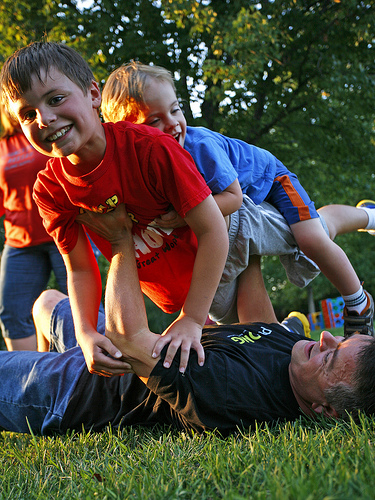 Dr. Fasano said he believes people should only eliminate foods they are certain to be the source of a health problem. “There is no return in investment unless you have something that can be fixed by a gluten-free diet,” he explained.
Dr. Fasano said he believes people should only eliminate foods they are certain to be the source of a health problem. “There is no return in investment unless you have something that can be fixed by a gluten-free diet,” he explained.
The Campbells believe that gluten is the source of Parker’s problems because he says he feels better now.
Parker’s old meals were high in gluten, sugar, calories, and fat. He used to have cereal or Pop-Tarts for breakfast, a sandwich with chips for lunch, and breaded chicken nuggets for dinner. Since starting a gluten-free diet, they have yet to find a substitute for bread he likes. Still, they say he is adapting well to the diet and is more willing to try new foods.
“I brought him to a Paleo potluck a few weeks ago,” said Campbell, “and he immediately asked if there would be things he could eat. I told him that he could eat everything there — and that’s what he did.”
Campbell said that he hopes Parker will become more open to learning about Paleo and trying it out. He thinks it is feasible in the near future, but he is delighted with his son’s maturity and greater openness to try more foods.
“In an ideal world,” said Campbell, “we’d all be Paleo in my mind.” He said it would also help his family with food preparation so they could all have the same meal. “We’re better at it now, but it could be more uniform and less time consuming.”
Amy said one of the biggest challenges of Paleo is that it takes a lot of preparation. “Sometimes you just don’t have one and a half hours to make spaghetti squash,” she said. “I really like all the stuff Quint has come up with, but sometimes there’s not enough time to prep and cook it. You really have to be more organized and prep in advance.”
Campbell said he likes to cook, so it does not bother him. An alternative diet like Paleo can be burdensome if you don’t like to cook, he admitted. “I didn’t want to be the fat 40,” said Campbell. “I also wanted to keep up with my sons. So far I can still outrun him,” he said, laughing.
Like Dr. Cordain, the most widely published researcher and exponent of Paleo nutrition, Dr. Fasano believes that Paleo nutrition has fact to it. “There is no question that in three and a half million years of evolution, humankind has been grain-free, dairy-free,” said Dr. Fasano. “The question is how feasible that would be. Technically, you should also eat everything raw because our ancestors didn’t cook anything.”
Dr. Fasano said the Paleo diet accurately reflects the diet to which people are evolved, but does not believe it is realistic.
Campbell said it is probably impossible to be totally Paleo in today’s society, but he believes the effort is rewarding. They haven’t tracked the changes in their budget, but suspect the initial costs were greater. He said they have replaced junk food with whole foods.
“I think it may actually have balanced out,” said Campbell. “It’s a costly investment at first, but the long-term effects are important.”
He said he is no longer buying aspirin and does not have to visit the doctor as often.
“I’m eating real food,” he said. “What’s so hard about that?”
~~*~~
All photos by Eric Ponder.








